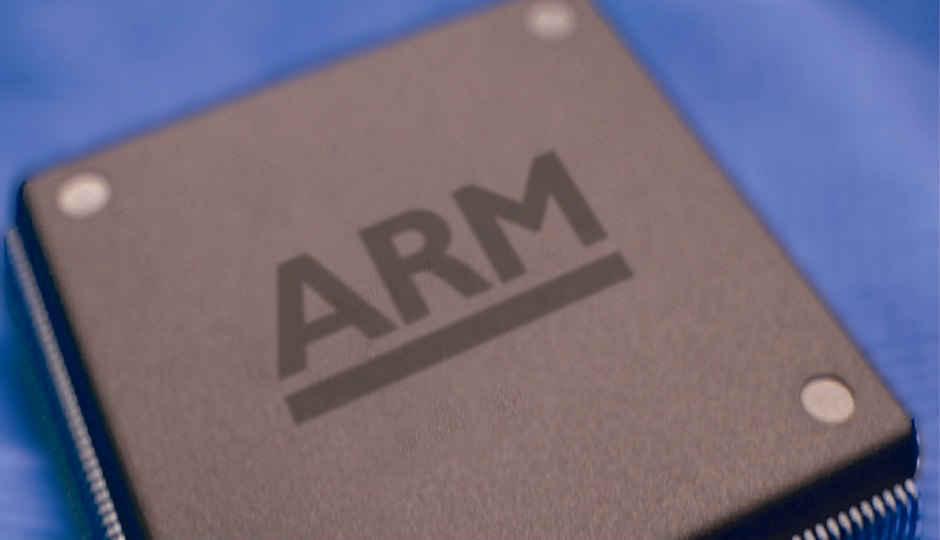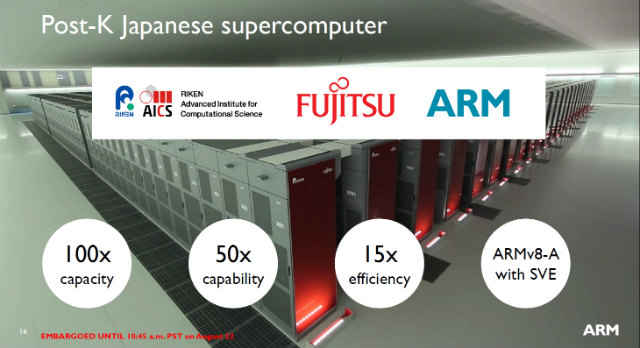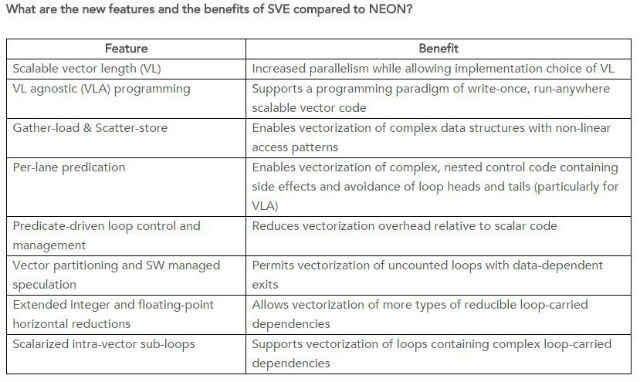ARM announces v8-A SVE cores, to rival Intel in supercomputing

The maker of energy-efficient mobile processing cores is upping the game with v8-A SVE cores.
British chipmaker ARM Holdings has announced ARM v8-A SVE, a new architecture to build chips for high performance supercomputers and data centers. The new core architecture uses vector computing, a mechanism that simultaneously uses an array of data to execute instruction sets, rather than executing single data items like standard processors. This will allows HPCs (high performance computers), servers and data centers using ARM’s v8-A core architecture to efficiently execute large amounts of data seamlessly, the core requirement of any high performance computer.
The first company to license the new ARM architecture is Fujitsu, for the Post K supercomputer to be made by 2020 at the RIKEN Advanced Institute for Computational Studies. One of ARM’s main strengths lie in building energy-efficient chips, which has led to ARM cores being used by major mobile system-on-chip (SoC) manufacturers across the world. Even in the world of high octane performance, Fujitsu is advertising 15 times improved efficiency in the Post K computer that will use ARM’s v8-A cores.
One of the major advantages that ARM’s v8-A cores will present is Scalable Vector Extensions (SVE), which in addition to the Industry Standard Architecture (ISA) will support calculations ranging from 128-bit to 2048-bit. This will allow HPCs to streamline heavy calculations and tackle processor loads with ease, and actually move the load of heavy calculations from software to hardware. This also improves on established vector calculation protocols, and ARM aims to make the best usage of it.
In tests, ARM’s v8-A SVE cores are already showing significant speed and efficiency upgrades over existing paraphernalia, and ARM will aim to capitalise on this to make its foray into high performance computing hardware, a field that till date has been dominated by Intel. ARM has already seen its immense success in mobile computing and will look to replicate the same. Intel, meanwhile, missed the bus on the industry of mobile phones, and may certainly be wary of ARM’s latest high performance cores.
Widespread adoption of ARM’s v8-A SVE core architecture in high performance computing is still a few years into the future, but is this the advent of a new war for Intel to wage? This signs seem to say so.
Digit NewsDesk
Digit News Desk writes news stories across a range of topics. Getting you news updates on the latest in the world of tech. View Full Profile







